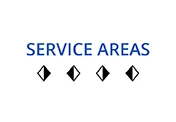Issues That Can Accelerate the Aging of Your Roof
When To Replace An Aging Roof?
While many homeowners save assiduously for a bathroom upgrade or fully-loaded media room, many still blanch at the idea of having to replace their roof. And we can certainly see the point. A new roof doesn’t bring the same pleasure that a projection screen with surround sound does, but it does bring you something more: Peace of mind.
In this world, nothing lasts forever. And that includes roofing shingles. Most standard 3-tab shingles are only rated for 15 years of use. Architectural styles (the kind that look sort of 3D) are often rated for 25 or 30 years.
Nevertheless, those are the “best case” scenarios for the lifespan of a shingle roof. You can’t just go by the calendar year. You will want to keep an eye on your roof to head off troubles before they start.
Issues That Can Accelerate the Aging of Your Roof
Basically, weather is really hard on buildings. And your roof bears the brunt of it. Most noticeable is the acute damage:
- Storm Damage
- Hail Damage
- Wind Damage
- Falling Debris
We always encourage homeowners to visually inspect their roofs after storms because not only will the damage be more noticeable, you may also be eligible for an insurance claim. If you have to replace your roof anyway, wouldn’t it be nice to have help?
The Symptoms of a Failing Roof
Long before the leaks show up, there will be evidence that the roof deck is failing. To understand why these issues are so serious, it helps to understand how roofs go together.
Shingles are not just to shed the rain: they actually stick to each other, forming a watertight deck. If they did not stick to each other, the wind would be able blow them up, causing them to flap in the wind, and allowing rain and ice to penetrate.
Shingles are made of felt, impregnated with asphalt and then coated with the granules to make them durable. When the granules start to go, however, the rest of the shingle is not far behind. If you see a lot of granules show up in your gutters, keep an eye out.
Another subtle symptom is a cracked shingle. This is harder for a homeowner to spot, but it’s often caused by hail or storm damage. Wind damage is easier to notice: if theres a line of missing granules about an inch from the next row of shingles, you’ll find that that shingle has cracked and has been flapping in the wind. Call a roofing contractor immediately.
It’s not enough to keep an eye out for curling or missing shingles. Educating yourself about your roof’s health will avoid a nasty leak into that new media room. Call Style Roofing for a free estimate at 703-754-9906!











